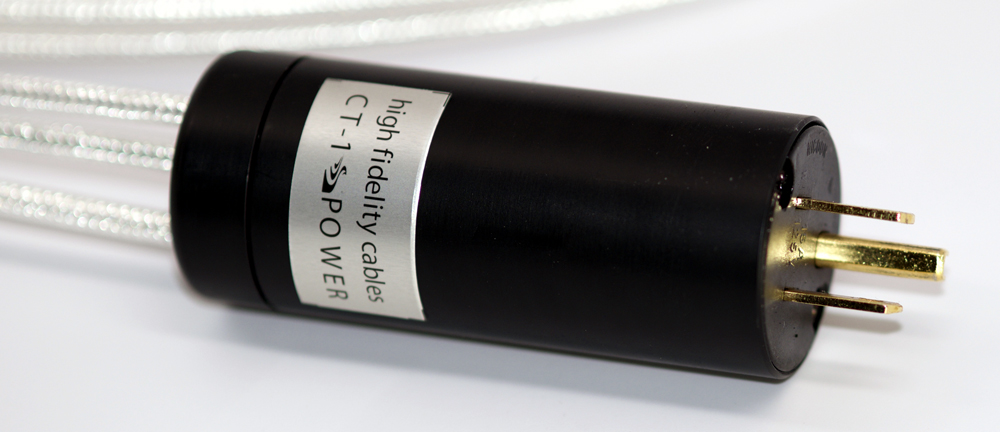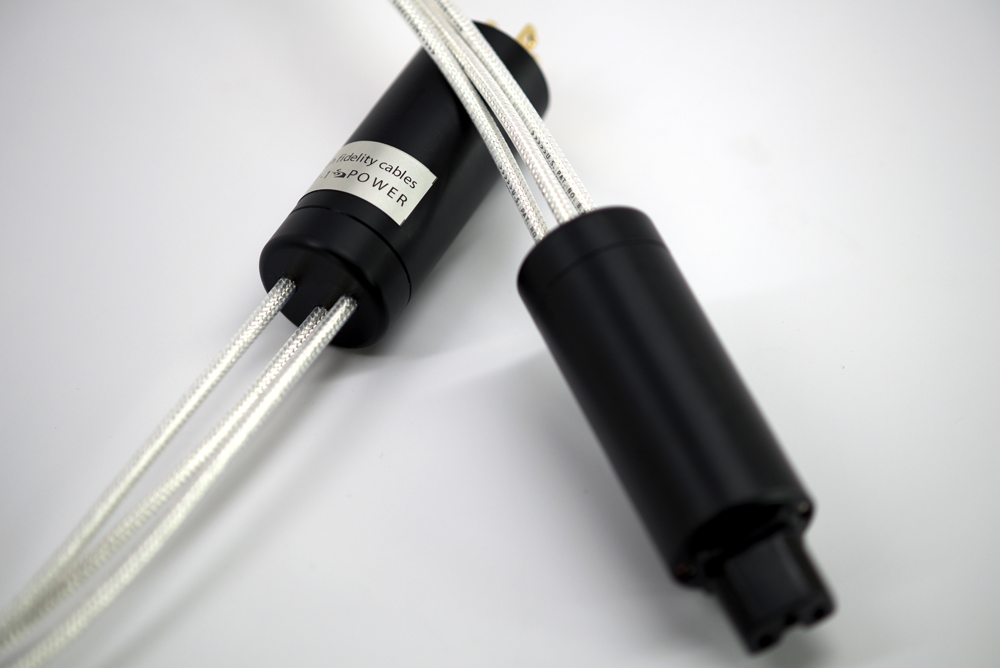Jack’s other High Fidelity Cables Reviews (in descending chronological order):
CT-1 Ultimate Reference Rhodium Plus Power Cord (June 2014)
CT-1UR Ultimate Reference Speaker and Interconnect Cables (February 2014)
CT-1 Ultimate Cables (May 2013)
CT-1 and CT-1E speaker cables (May 2013)
CT-1E Phono and Interconnect Cables (February 2013)
CT-1 interconnects (October 2012)
I have heard nearly all of High Fidelity Cables’ products. With all the interconnects and speaker cables I thought even Rick Schultz’s introductory CT-1 cables were better than any other cables I had used in my system. Some costing much, much more. The only one of the company’s power cables I had heard was their top-of-the-line $12,900 CT-1 Ultimate Reference Rhodium Plus. Before I received these, the best power cables I had heard in my system were the Stage III Kraken and the CT-1 were $4,500 less expensive and really, really incredible sounding. If you haven’t read some of my other High Fidelity Cables I suggest you do so or go to the company’s website to better understand how magnetic cables work. This is more of a quick look than a full review. I’ve already written enough about this incredible new technology.
When I saw that High Fidelity Cables had brought out the CT-1 Power Cable I called and ask if they could send me a couple to hear. They were nice enough to send them right out. There were two things I wanted to learn. First, I wanted to know how close the sound of my system came to the way it sounded with the Rhodium Plus. Second, I wanted to know how the sound of my system would compare to the similarly priced and superb Audience Au24 SE powerChords.
The High Fidelity Cables CT-1 Power Cables came in the same very nice flight case of the $12,900 Rhodium Plus. When I opened the flight cases I saw the now very familiar white cables that are used in all their products. The difference from one High Fidelity Cables products to another isn’t the cable itself, but the amount of magnets used. The CT-1 Power Cables like the other entry level CT-1 products only have magnets in the connectors and thus they are larger than most power cable connectors.
I plugged the cables in my other system and let them break-in for about two weeks before I gave them a serious listen. Then I took them downstairs and started by replacing the Rhodium Plus that ran from the wall socket to the HB Cable Design PowerSlave Marble that all my equipment was plugged into. I had discovered with other cables that this was the most significant place for a power cable in my system.
I could answer one of the two question immediately; the CT-1 didn’t come very close to the Rhodium Plus. I’m sorry to report that it was a significant step down. Whether or not it’s a $11,000 step down will depend on your pocket book and your system. Still, it was very significant. Now this is in no way saying that the CT-1 wasn’t a good power cable; I mean why would they make the Rhodium Plus if it wasn’t significantly better.
So how was it different? Well, with the CT-1 my system was just as amazingly transparent, the top-end was just as extended and the system sounded very quick. Where it didn’t match the Rhodium Plus was in fullness, scale, power and bass impact. The music just didn’t have the same firmness and deep foundation that I am used to with the Rhodium Plus.
Next, I put the Rhodium Plus back in and replaced the one going from the HB Marble to the Pass Labs XA30.8 with the CT-1. While there were differences, the sound was very similar. It wouldn’t take me long to get used to the CT-1if I was to use it every day.
Now, this leads me to the second question. How does it compare to the Audience Au24 SE powerChords. I use the Au24 SE on my 47 Labs Midnight Blue CD player normally so I started by comparing it with the CD player. It was much more transparent, quicker and had tighter bass than the Audience. This would be a good thing if all the CDs I wanted to listen to were well recorded, but they aren’t. The only reason I have a CD player is for music I can’t get on vinyl and often they aren’t that well recorded and it seemed that on those CDs, with the CT-1 my system just wasn’t as forgiving as it is with the Au24 SE.
Now when I compare them on the Pass Labs XA30.8 or into the HB Marble these traits are much more desirable. Using the High Fidelity Cables CT-1 power cable with both of these it simply let me hear the music and the silence within the music better. Compared to the Au24 SE, the CT-1’s top-end was prettier, and the midrange had slightly more tonal color. The CT-1 Power Cable power cords allowed my system to sound significantly more transparent. They also increased the musical flow of my system and significantly augmented the system’s overall PRaT.
Both the High Fidelity Cables CT-1 Power Cables and the Audience Au24 SEs are very good, but I think with most systems though the CT-1 will be the best power cables you can get for under $6,000 or so. It also has the blessing of not being thick as a water hose. It is very easy to work with. Very highly recommended.
- (Page 1 of 1)




I agree with your review, thanks for writing it.
Sorry, but the cost of these is silly. This is one place where blind listening tests would be easy, and where, I firmly suspect, price would not reflect quality.
JC…your comment could not be farther from the truth.$2000 for a great pc these days is cheap.These are superb cables and they get better as you go up the line.The entire line of HF cables, as reviewed here and elsewhere, is amazing.Like the review states, they may be ‘the best power cables you can get for under $6000 or so.”
These power cords are for people who are flawed and deeply silly, who someday are likely to regret how they spent their lives and defined themselves – not as philanthropists who used their wealth to help those in true need, but as fundamentally silly consumers who tried to find meaning in the accumulation of electric power cords, who spent as much money for a six foot wire encased in plastic as would have saved many lives in Africa and Afghanistan. There are better ways to spend money and a life. If you don’t agree, you should probably talk to a priest or mental health expert.
macebe, you should probably not waste your time on audiophile products. Instead buy the cheapest Walmart rack system you can find.
$12,900 and the product identification is a sticky?
I really have to wonder about these magic power cables and the cryogenic frozen electrical plugs. How does this take care of the power from my breaker box going through cheap romex and the $1 electrical plug at the wall? What makes this 6 feet so critical where the other 100 feet isn’t? The electric at the wall probably has gone through 3 other plugs in a daisy chain so all of a sudden, this is important? So tell me this does laminar flow of the electron stream to make it’s magic. But then what would magnets do? Another put a brick on top of your amp solution. Do a double blind test and then tell me what you hear.